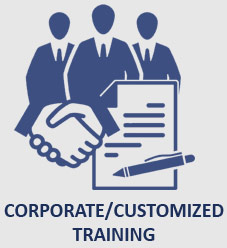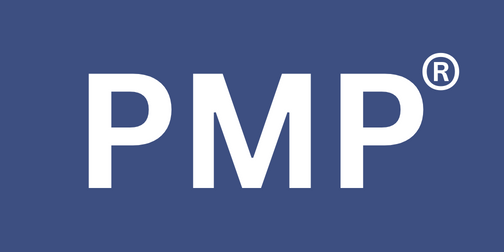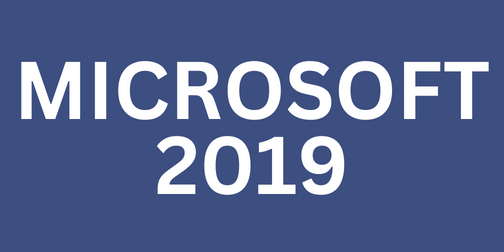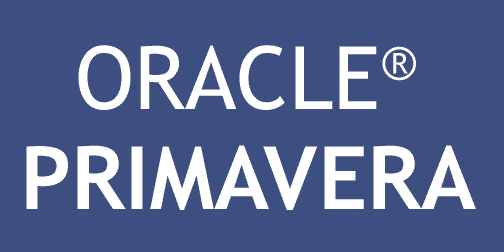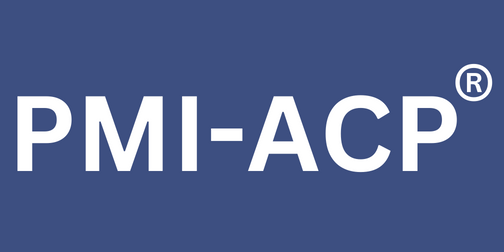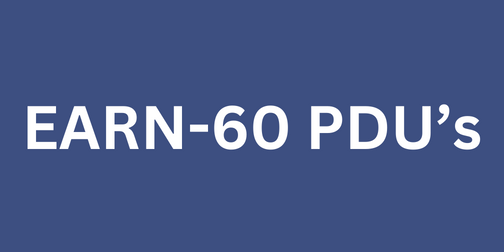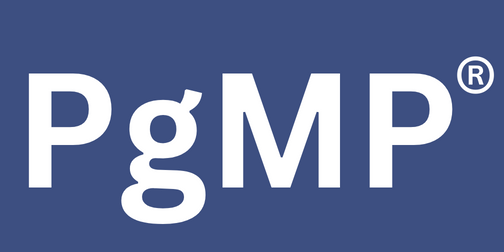PRINCE2 AGILE® PRACTITIONER
PRINCE2 Agile® is a solution combining the flexibility and responsiveness of agile with the clearly defined framework of PRINCE2®. PRINCE2 Agile® framework covers a wide range of agile concepts, including SCRUM, Kanban, and Lean Start-up. It provides guidance on tailoring PRINCE2® in an agile context and includes:
- How to tailor the integrated set of PRINCE2® principles, themes, and processes
- How to produce the PRINCE2® management products
- How to map the common agile roles to the PRINCE2 project management team structure
- How to incorporate the fundamental agile behaviours, concepts, and techniques into PRINCE2
- The strength of PRINCE2® lies in the areas of project direction and project management whereas agile has a very strong focus on product delivery. When PRINCE2® and agile are combined, Project direction, Project management and Project delivery are optimized to create a complete Project management solution.
PRINCE2 Agile® is an extension module tailored for forward-thinking organizations and individuals already benefiting from PRINCE2®. It provides further guidance on how to apply agile methods to the world's most recognized project management method. PRINCE2 Agile® has been developed as a single-tier Practitioner qualification. The purpose of the Practitioner qualification is to demonstrate that you can apply and tailor PRINCE2 Agile® in a scenario situation. The purpose of the Practitioner qualification is to demonstrate that you can apply and tailor PRINCE2 Agile® in a scenario situation.
Prince2 Agile ®´ŞĆ course on this page are offered by Ducis Management Consulting Private Limited ATO of AXELOS Limited. Prince2 Agile ®´ŞĆis a registered trade mark of AXELOS Limited. All rights reserved
Purpose of the PRINCE2 Agile Foundation Certificate
PRINCE2 Agile® Practitioner combines agile concepts with the world’s most popular approach to project management. Developed in response to user demand, the PRINCE2 Agile Practitioner certification teaches you to blend structure, governance and control with agile methods, techniques, and approaches.
Program Outline
PRINCE2 AGILE® PRACTITIONER |
|||
|
msections Examsections E Exam sections msections xsections |
Learning Outcome (LO) |
|
|
|
6 x Multiple Choice Questions (MCQs) |
|
|
|
|
Understand the purpose and context for combining PRINCE2® and the agile way of working |
3. Be able to apply and evaluate the focus areas to a project in an agile context |
|
|
|
8 x MCQs using the scenario and one set of additional information |
4. Be able to fix and flex the six aspects of a project in an agile context |
|
|
|
12 x MCQs using the scenario and one set of additional information |
5. Be able to apply or tailor the PRINCE2 principles, themes, processes and management products to a project in an agile context |
|
|
|
50 MCQs |
100% |
|
|
|
LO |
Coursewarecontent(referencestothePRINCE2Agile®guideareinbrackets) |
|
1 |
ExplainthedifferencesbetweenprojectsandBAU(Businessasusual)(Figure1.1,Section1.2) |
|
Describeagileanditscommonapproaches,howandwhyagileapproacheshavedevelopedandwheretheyareused(Figure 2.3,Section2.1) |
|
|
Describethehistoryofagile,it’scontrasttothewaterfallwayofworkingandhowtheAgileManifestofits in(Figure2.1) |
|
|
Describethedifferentlevelsofagilematurityandwell-knownagileframeworks(Section2.2.1,Table2.1) |
|
|
Describebehaviours,conceptsandtechniquesthatcharacterizeagile(Section2.2.2,Table2.2) |
|
|
DefinethePRINCE2Agileviewof‘agile’(Section2.2) |
|
|
DescribeKanban,theKanbanmethodanditssixgeneralpractices,includingtheuseofCumulativeFlowDiagrams(CFDs)(Figure 20.2,Figure 20.4,Section20.4.1) |
|
|
DescribethecoreconceptsofLeanStart-up(Section20.4.2) |
|
|
Describetheuseofworkshops(Section26.4.1) |
|
|
Describehowtotransitiontoagile(AppendixF) |
|
|
DefineScrumtheoryandexplainthenatureoftheScrumteam,Scrumevents,ScrumartefactsandSprints (AppendixH) |
|
LO |
Coursewarecontent(referencestothePRINCE2Agile®guideareinbrackets) |
|
2 |
DescribethecomplementarystrengthsofPRINCE2andtheagilewayofworking(Section3.1,Figure3.1) |
|
Define who can benefit from using PRINCE2 Agile and in what contexts/situations (Section 3.1, Section 3.2,Section3.3) |
|
|
Define the make-up of PRINCE2 Agile (frameworks, behaviours, concepts, techniques, focus areas) (Section3.5, Figure 3.2) |
|
|
Explaintheeight‘guidancepoints’(Section3.6) |
|
|
Explain how PRINCE2 controls and governance can enable agile to be used in many environments (Section3.7) |
|
|
DescribewhatatypicalPRINCE2‘projectjourney’lookslikeinanagilecontext(Figure4.1,Section4.1) |
|
|
3 |
Explain the purpose and use of the Agilometer throughout a project (Section 24.1, Section 24.2, Section24.3) |
|
Describe the six sliders used on the Agilometer, explain their significance and how to improve them (Figure24.1, Section 24.4) |
|
|
Describeindetailrequirementsterminology,decompositionandprioritization,includingMoSCoWandOrdering (Figure 25.2,Section25.5,Table25.3) |
|
|
Explainhowrequirementsprioritizationisused(Figure25.2,Section25.5) |
|
|
Explain the rich communication focus area, its importance and its key techniques (Section 26.1, Section26.2, Section 26.3) |
|
|
Explainhowtomanagefrequentreleasesandthebenefitsof‘failingfast’(Section27.1,Section27.2) |
|
|
4 |
Describe how to use the ‘hexagon’ in relation to the six aspects of project performance (Figure 6.1, Section6.1) |
|
Explaintheuseoftolerancesintermsofwhatto‘fix’andwhatto‘flex’inrelationtothesixaspectsof projectperformance (Figure6.1,Section6.1,Table6.1) |
|
|
Describe in detail each of the five targets that underpin the use of the hexagon (Section 6.4, Section 6.5,Table6.2) |
|
|
Explainwhythe‘fixandflex’approachisgoodforthe customer(Section6.5) |
|
|
5 |
DescribeindetailthefivePRINCE2Agilebehaviours(Transparency,Collaboration,RichCommunication,Self-Organization, Exploration)(Section 7.4,Figure 7.1) |
|
ExplainthatagileneedstobeincorporatedinallsevenPRINCE2processesandallseventhemesbutthattheamount appropriate to each will vary depending on the project context (Section 8.1, Section 8.2, Figure16.2, Figure 16.3,Figure 16.4,Section16) |
|
|
DescribethetwocommonOrganizationrolesofScrummasterandProductowner(Section10.2.1) |
|
|
Explainhowtoadjustroles,includingtheuseofspecialistroles,andtheoptionsforteamorganizationinaproject(Section10.3,Section10.4, Section10.5.2, Table 10.1, Figure10.4, Figure10.5) |
|
|
Definethemake-upofatypicaldeliveryteam (Section10.4.2,Section10.4.3) |
|
|
Describeservantleadership,itsuseandimportance(Section10.5.1) |
|
|
DescribehowtodefineWorkingAgreements(Section10.5.3) |
|
|
Describe quality setting techniques including ‘definition of done’ and the use of acceptance criteria (Section11.2) |
|
|
Describe quality testing, quality checking and management techniques (Section 11.2, Section 11.3, Section20.3) |
|
|
Describeapproachestoplanningandtypicalplanningtechniques (Section12.3) |
|
|
Describeapproachestoriskandhowagileconceptsmitigatemanytypicalrisks(Section13.1,Section13.2) |
|
LO |
Coursewarecontent(referencestothePRINCE2Agile®guide areinbrackets) |
|
5 (cont) |
Describe how blending PRINCE2 with agile approaches controls, responds to, and minimizes the impact ofchange,includingriskmanagementandconfigurationmanagement(Section14.2,Section14.3) |
|
Describe how empowered self-organizing teams handle change dynamically within set tolerances (Section10.2, Section14.3.3) |
|
|
Describecommonfeedbackloopsandtheirimportance(Section14.4.1) |
|
|
Describeprogressmonitoringtechniquesincludinguseof‘workinprogress’boards,burncharts,informationradiators(Figure 15.1,Section15.2,Section15.3, Section15.4) |
|
|
Describe in detail agile techniques that may apply to each PRINCE2 process including Cynefin (Figure 17.3,Section17.3,Section 17.4) |
|
|
Describe how to flex the ‘Direct a Project’ stage and the benefits of collaborative working (Section 18.2,Section18.3) |
|
|
Describehowto‘managebyexception’withemphasisonempowerment,quantityofdeliverables,rich informationflowsandvalueofdeliverables(Section18.3) |
|
|
ExplainwhyPRINCE2‘stages’maynotberequired,includingtheuseoftimeboxesandScrumofscrums (Section19.2) |
|
|
Describe typical output mechanisms when ‘Controlling a Stage’ and ‘Managing a Stage Boundary’ (Section19.2, Section 19.3,Section 21.3, Section 21.4) |
|
|
Describetheuseofretrospectivesandhowtomakethemeffective(Section19.4.1) |
|
|
DescribeapproachestomanagingproductdeliveryincludingScrumandKanban(Section20.2) |
|
|
ExplainhowtodefineWorkPackages,ProductDescriptions,qualitycriteriaandtolerances(Section20.3) |
|
|
Giveguidanceonbehaviours,riskandthefrequencyofreleases(Section20.3) |
|
|
Explainhowtomanagestageboundariesandthesimilaritiesbetweenastageandarelease(Section21.2) |
|
|
Explainhowtoassessquantity,qualityandbenefitsofstagedeliverables(Section21.3) |
|
|
Explain how to effectively close a project, including evaluation of the use of agile (Section 22.2, Section22.3, Section 22.4) |
|
|
DescribehowtotailorPRINCE2products,includingWorkPackages,HighlightReportsandCheckpointReports(Chapter 23) |
|
|
DescribeindetailagiletechniquesthatmayapplytoeachPRINCE2themeincludingrequirements,definingvalueand user stories(Figure25.3,Section9.4.1, Section 25.1, Section25.6.1) |
|
|
Describeguidanceontheuseofcontracts (Section28.3) |
|
|
DescribePRINCE2Agiledeliveryroles(AppendixA,AppendixB) |
|
|
ExplainhowtousetheHealthCheck(AppendixC) |
|
|
Describethefundamentalvaluesandprinciplesofagile(AppendixE) |
|
|
OutlinetipsforthePRINCE2Agileprojectmanager(AppendixG) |
- High Demand
- Coverage
- Higher Compensation
- Professional Growth
- Job Opportunities
- Meet Qualifying Criteria
- Undertake Formal Project Management Training
- 21 Contact Hours of Education
- Become PMI® Member
- Apply for PRINCE2® Practitioner Certification
- Schedule Exam at local Prometric Testing Center
- Appear for the exam
- Pass the Exam
- Start working towards continuous professional development
- Assess Participant's Profile
- Provide a Road Map for PRINCE2® Practitioner Certification
- Share Details about Costs associated with the PRINCE2® Practitioner Exam
- Provide Options to attend 21 Hours Training via
- Classroom
- Live Learning - Query Handling Facility over E-mail
- 1000+ Practice Questions for PRINCE2® Practitioner Exam
- Dedicated Customer Support for
- PMI® Membership
- PRINCE2® Practitioner Application Submission
- Exam Booking











